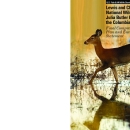What We Do
Julia Butler Hansen Refuge faces many unique management challenges. While the refuge includes many pristine areas, it also includes lands where considerable restoration effort is needed. With a diversity of habitats, an equal diversity of conservation efforts must be employed. The refuge is home to several threatened species, and is trying to restore habitat for many others. Like many places, this refuge is also coping with the threat of invasive species invasive species
An invasive species is any plant or animal that has spread or been introduced into a new area where they are, or could, cause harm to the environment, economy, or human, animal, or plant health. Their unwelcome presence can destroy ecosystems and cost millions of dollars.
Learn more about invasive species . To help plants and wildlife, refuge staff uses a variety of habitat management techniques to maintain, recover or enhance plant and wildlife values. Refuge staff carefully considers any management techniques and employ them in varying degrees according to the situation.
Sometimes, sensitive areas are closed to the public so that the land or species can recover more quickly. Mowing, tilling, seeding and the control of water levels are some of the techniques used to help native plants recover for the benefit of other wildlife. Mechanical removal or application of herbicides is also used to control invasive plant species, such as gorse, tansy ragwort and Scotch broom.
Standardized ground and aerial wildlife surveys and vegetation surveys are conducted on the refuge throughout the year to inventory populations and document habitat use. Units are evaluated by how well they met habitat and wildlife use objectives.
Public involvement and input are important to us and to the planning process, and we hope you will take an active interest in the process, individually and as a community.
Management and Conservation
Conservation efforts are guided and directed by the refuge's Comprehensive Conservation Plan which was approved in 2010. Goals include:
- Preserve the Columbian white-tailed deer in its natural habitat for future generations to see and enjoy.
- Providing viewing opportunities for the public to see this animal.
- Other wildlife of values: waterfowl, band-tailed pigeons, and numerous other wildlife species associated with a river environment.
- A waterfowl use area, part of the overall Columbia River wintering area, which plays a major role in winter for the Pacific Flyway.
- Preserving the river bottom habitat for mammals and birds.
- Historic, current and proposed management practices for habitat including vegetation on the islands consisting of willow, black cottonwood, Sitka spruce, red alder, red osier dogwood, elderberry,
salmonberry, and other species. - Preserving the fishery identified including Chinook and coho salmon and steelhead.
- Preserving the sloughs within the area characterized by populations of warm
water game fish including bass, black and white crappies, bluegill, yellow perch, etc., and
various catfishes

